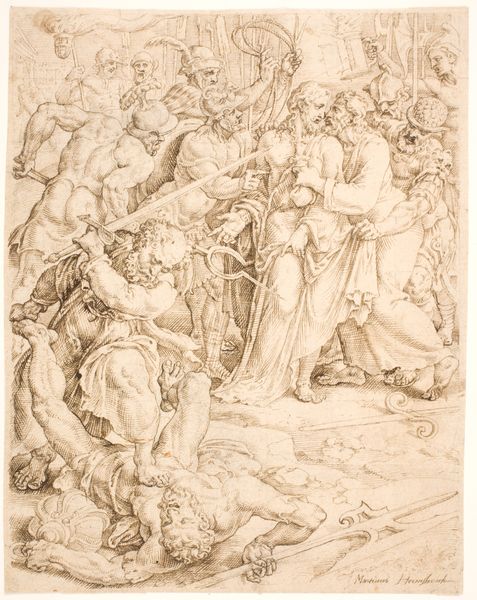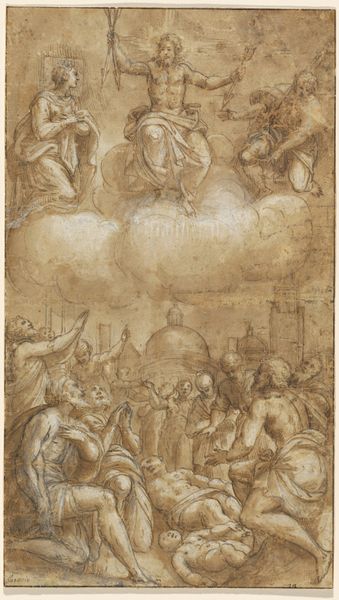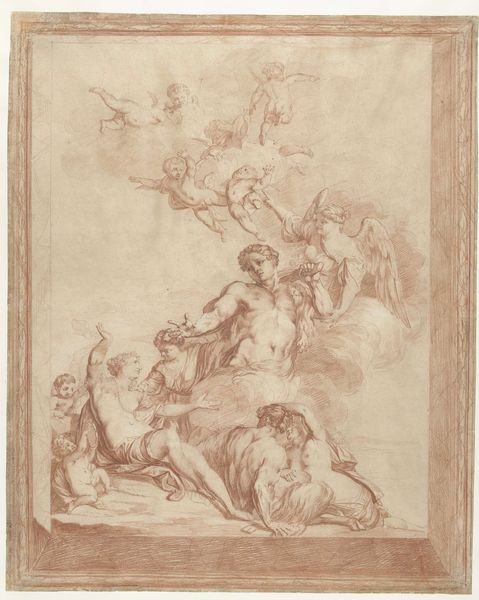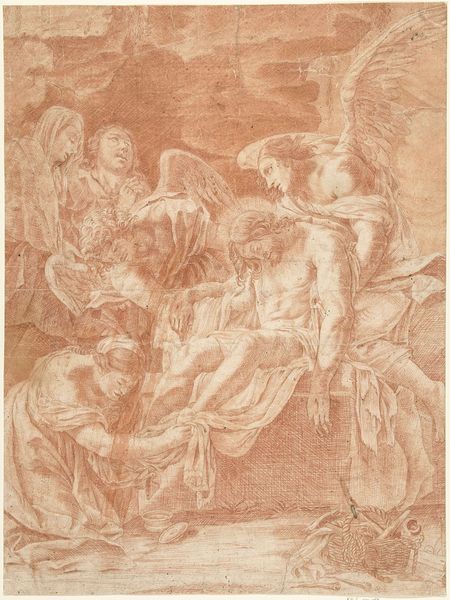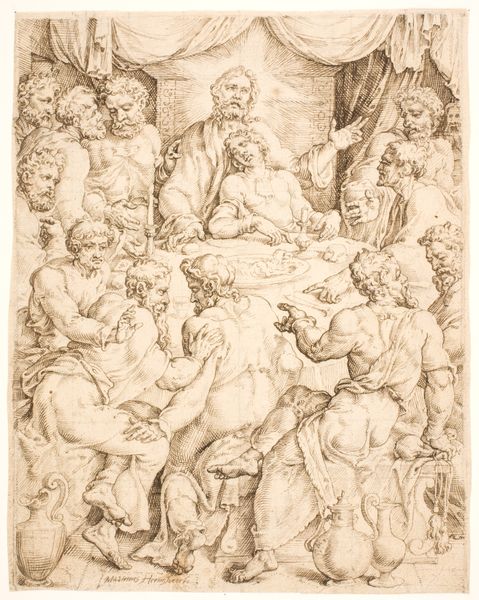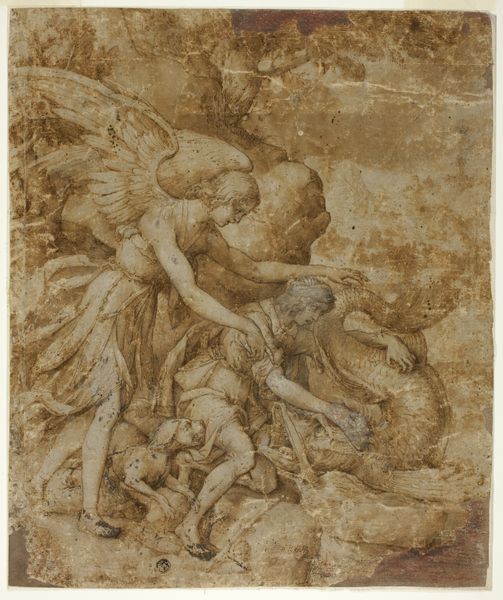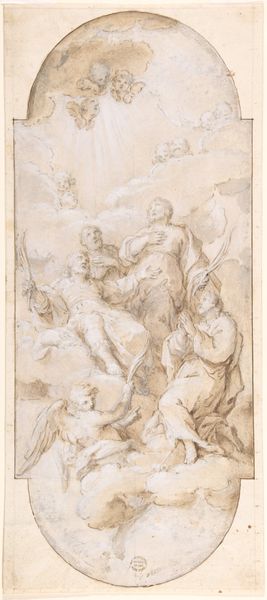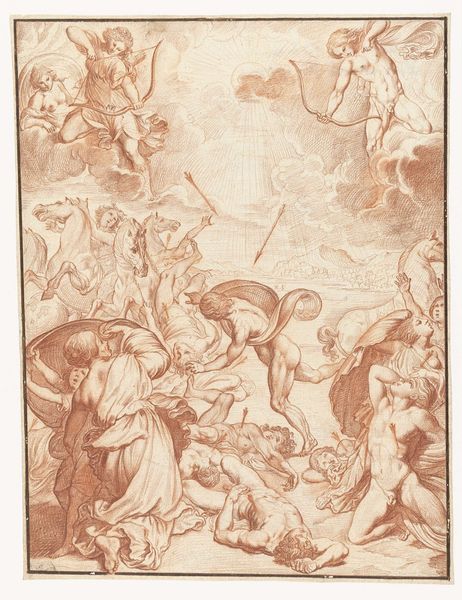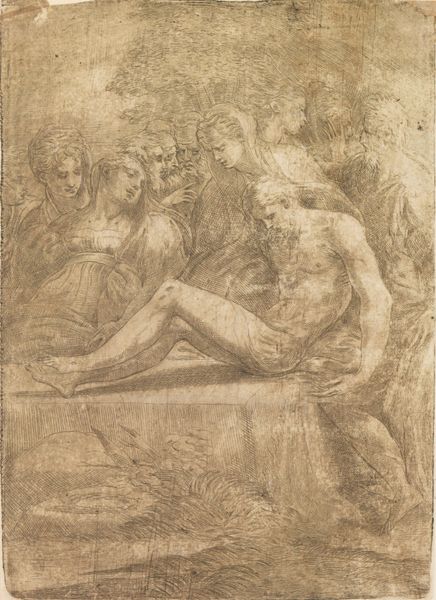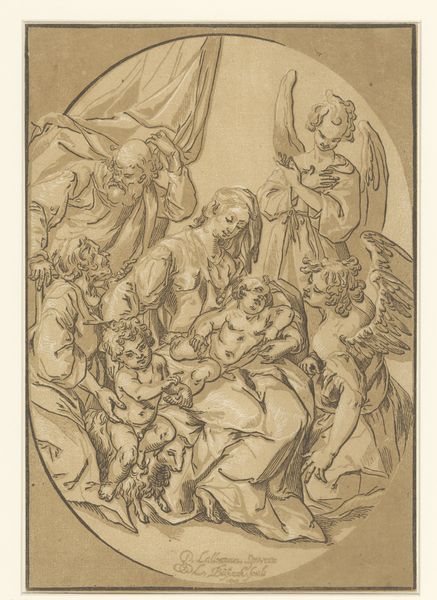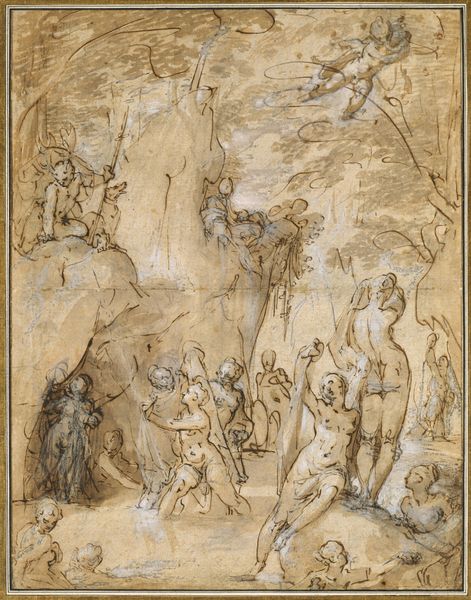
drawing, ink
#
drawing
#
narrative-art
#
baroque
#
ink painting
#
figuration
#
ink
Dimensions: 370 mm (height) x 278 mm (width) (bladmaal)
Curator: Here we have Abraham Bloemaert's drawing, "The Adoration of the Shepherds," created around 1610-1612. It's currently housed in the SMK, the National Gallery of Denmark. Editor: It feels… fragile. The limited palette emphasizes the linear quality of the ink, making everything seem tentative, almost sketched even in its finished state. Curator: It’s an interesting use of ink, particularly given the historical context. Bloemaert was working during a time when printmaking was becoming increasingly influential. We see the influence of print on the Baroque, informing dissemination and impacting the meaning of artwork for a broader audience. Editor: The composition almost reads like a stage play. Look at how the figures are arranged around the manger, their poses exaggerated to convey piety and wonder. It also speaks to notions of poverty in devotion versus opulent demonstration of devotion, given it's an intimate scene not necessarily meant to become grandiose. Curator: Absolutely, and it reflects the period’s religious sensitivities. Bloemaert's interpretation invites a public meditation, if you will, on faith and social harmony during this time, as opposed to an exclusive or lavish showing of religious art and belief. Editor: I wonder how the choice of a drawing affects our interpretation. It feels more immediate, more accessible. Like a glimpse into Bloemaert's process and perhaps more attuned to the realities of labour and birth. The rawness seems to flatten and democratize. Curator: It makes a statement in its apparent humility. The simplicity challenges established norms while conveying an essential spiritual narrative, which is very significant in examining religious, sociopolitical, and cultural narratives around the Baroque movement and how these were impacted or observed in Dutch society. Editor: Thinking about Baroque’s frequent drama, it also highlights the power of restraint in a period associated with theatrical flourish, perhaps pointing to alternative modes of resistance and piety that complicate straightforward conceptions of the period’s politics. It speaks in hushed tones, even as it engages the heavens. Curator: Yes, precisely, and viewing art as a tool of sociopolitical conversation shows how such intimate artistic pieces like Bloemaert's “The Adoration of the Shepherds” provide audiences the room to analyze political nuances of humility, especially where it serves as a form of resistance within political art of the period. Editor: It’s in the quiet moments that social narratives emerge. A potent work and reminder.
Comments
No comments
Be the first to comment and join the conversation on the ultimate creative platform.
